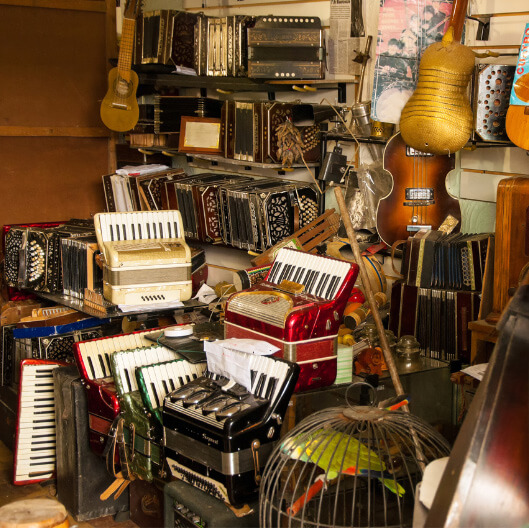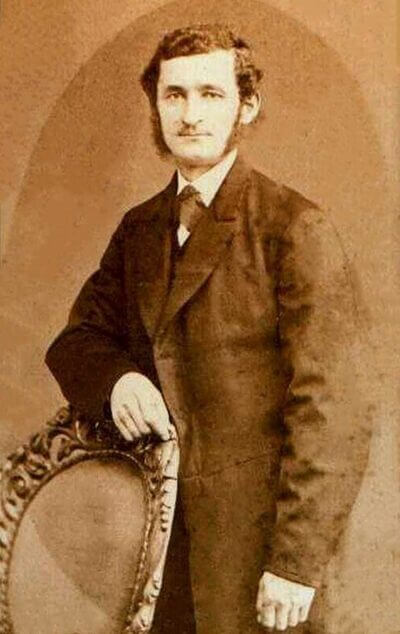Bandoneon History – From German Origins to Tango Roots
The bandoneon has one of the most remarkable journeys in music. Invented in 19th-century Germany, it moved from church and folk traditions to South America, where it became the expressive voice of Argentine tango.
This guide gives you a clear introduction to bandoneon history — where it began, how it spread, and why its sound is deeply tied to tango’s identity. If you want to understand how the instrument works before exploring its past, visit Bandoneon Basics .
What You Will Learn About Bandoneon History
This page gives you a clear overview of the key moments that shaped bandoneon history — from its German origins to its role in tango and its modern global evolution.
- How a German free-reed instrument evolved into the bandoneon
- How migration brought it to Buenos Aires and shaped its use
- How its expressive tone became the voice of tango
- How Carlsfeld, AA instruments, and modern makers shaped its legacy
A Short Introduction to Bandoneon History
The history of the bandoneon spans two continents and several musical cultures. What began as a regional European instrument eventually became central to one of South America’s most iconic art forms. Understanding this timeline is key to seeing how bandoneon history shaped the instrument’s distinct character.
In its early decades, the instrument spread through traveling musicians, trade routes, and immigrant communities. Each region used it differently, which shaped how players approached technique, repertoire, and sound. These cultural layers are what make bandoneon history so unique.


German Origins – Invention and Early Development
The bandoneon grew out of Germany’s rich 19th-century instrument-making tradition. Early builders like Carl Friedrich Uhlig created the first concertinas, and Heinrich Band later refined these designs into a more expressive and versatile instrument. By the 1850s, production expanded across Saxony, especially in towns such as Carlsfeld, which soon became a center of high-quality craftsmanship.
The bandoneon’s intimate yet powerful tone set it apart from other free-reed instruments. It worked in quiet church settings, on streets, and in folk music, making it adaptable enough to travel with musicians — and eventually across continents.
For deeper historical details, you can also explore the Bandoneon Origin article .
The Bandoneon in Tango – Emotional Sound & Cultural Identity
When the bandoneon arrived in Buenos Aires, local musicians immediately recognized its emotional potential. Its dark, vocal-like tone matched the themes of longing, nostalgia, and intimacy found in early tango. Players often described it as “the instrument that cries,” a sound that shaped the identity of the genre.
During the Tango Golden Age (1935–1955), the bandoneon became the leading voice of tango orchestras (orquestas típicas). Its phrasing guided dancers, its accents defined the rhythm, and its expressive tone helped create iconic recordings that still influence tango today.
Learn more about the tango orchestra here:

Modern Bandoneon Culture Around the World – Carlsfeld & Alfred Arnold
Modern bandoneon culture is shaped by both tradition and innovation. Carlsfeld in Saxony, once the home of Alfred Arnold’s legendary “Doble A” instruments, continues to influence how musicians judge sound quality today. Many players still consider AA bandoneons the reference for the classic tango tone, continuing the long-standing heritage of Carlsfeld craftsmanship.
At the same time, the instrument has expanded far beyond tango. It now appears in classical concerts, folk traditions, jazz projects, and contemporary compositions. New makers and restorers around the world continue the craft, and you can find verified professionals in my Bandoneon Expert Directory .
Festivals, workshops, and ensembles across Europe, the Americas, and Asia show how vibrant today’s community is. The bandoneon’s evolution did not end with the Golden Age of tango — it is still growing, adapting, and finding new musical voices worldwide.
Bandoneon History – Frequently Asked Questions
An Alfred Arnold (AA) bandoneon from Carlsfeld, Saxony, is known for exceptional craftsmanship and sound quality.
These instruments are highly valued by collectors and musicians, forming an essential part of the bandoneon’s heritage.
It became the melodic and emotional centerpiece of tango orchestras during the Golden Age. You can explore authentic examples of this sound in our Bandoneon Videos .
The bandoneon was invented in Germany in the mid-1800s and used in religious and folk music. It later reached Argentina through European immigrants, where it became central to tango culture and gained a deeply emotional and expressive role.
Discover the full story behind its cultural journey in our article:
👉 Bandoneon Origin: Where does this instrument come?
The bandoneon was invented in 19th-century Germany and developed from earlier concertina models. A detailed overview of its early evolution can be found in our Bandoneon Origin article .
Astor Piazzolla is the most famous bandoneonist, known for revolutionizing tango with his nuevo tango style. Other great players include Aníbal Troilo, Pedro Maffia, and modern artists like Dino Saluzzi and Ryota Komatsu, who helped bring the bandoneon to global audiences.
Immigrants brought the instrument to Buenos Aires, where its emotional tone fit perfectly with early tango. For a broader look at how the instrument shaped the genre, visit our Bandoneon Comparison page .
The bandoneon is essential to tango music because of its expressive, melancholic tone and natural push-pull phrasing. It can “breathe” with the music, making it the voice of longing, loss, and love in tango – unlike any other instrument in the genre.
Continue Exploring Bandoneon Topics
If you want to deepen your understanding beyond bandoneon history, these guides provide clear next steps. Each page covers one essential area: how the instrument works, how to learn it, how it compares to related instruments, and what to know when buying or maintaining one.